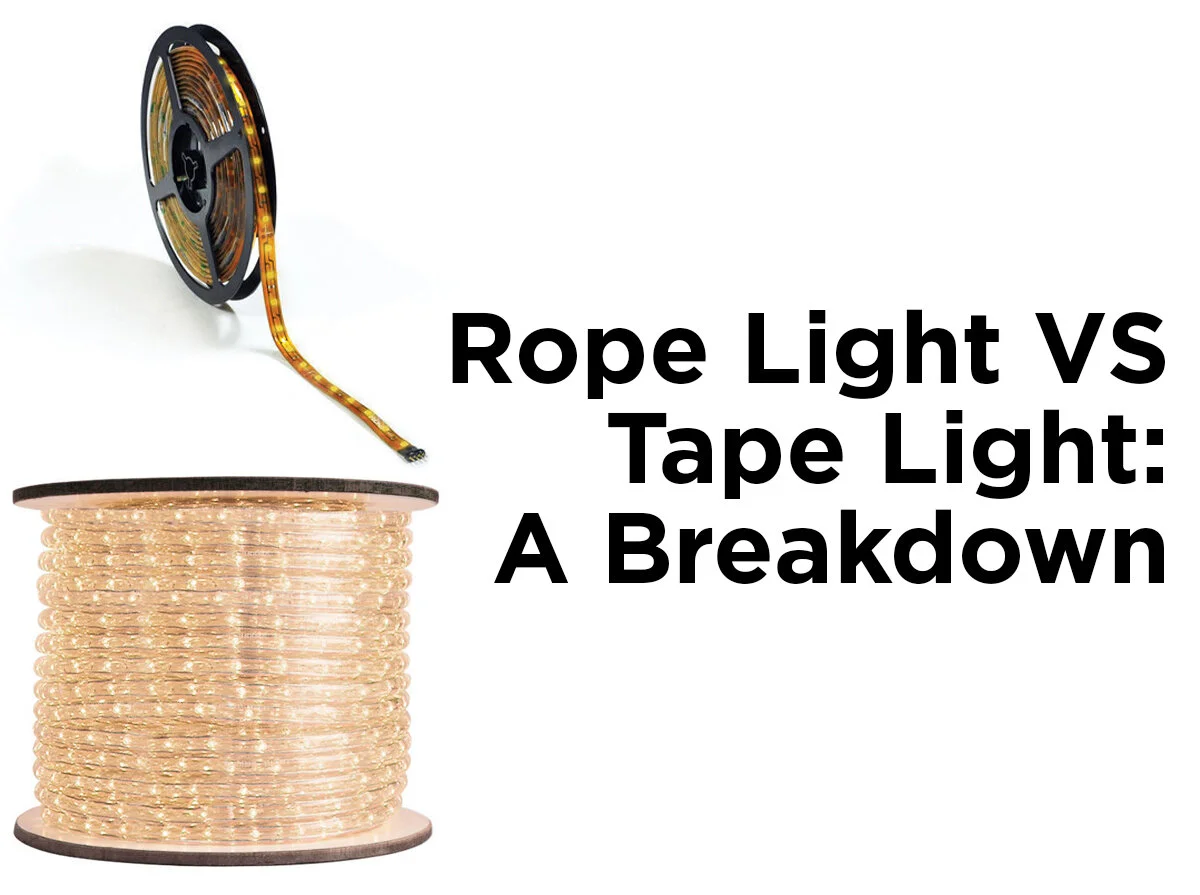Installing Rope Light Outdoors
Robust and flexible, rope light seems to find itself being used more and more often for everything from subtle decorations to brilliant accents or guide-lighting. By now you know that rope lights are perfect for outdoor decoration as well. Many of the custom installations require you to cut and splice rope light to fit, but the first cut renders your rope light unfit for the outdoors as it invalidates the UL rating. So here’s a quick guide from start to finish for how to properly install outdoor rope lighting that’s fully weatherproof without impeding the light it’s supposed to give.
Identify where you want rope lighting. This can be:
Around bannisters and railings
Lighting the underside of canopies, umbrellas, overhangs, or gazeebos
Along paving stones
The edges of fences
Trees or other landscape features
Measure the full distance of what you’re trying to illuminate. Identify the nearest power source and how much of a tail (power cord) you’ll need from the lighting to the actual power source. Will your power adapter need to be remotely mounted or is the first string of lights immediately next to the outlet?
Cut rope light as needed. Most of your segments will be shorter than the length of an entire spool. If you have any corners or turns that are 90 degrees or less you’ll want to cut and use a corner- or T-connector for those sharp angles.
Splice and Seal Connections. Every time you make a cut or join two segments together you need to be sure that the connection is sealed. After the ends are joined, use a heat-shrink tube to seal out moisture and water. Be sure there are no air bubbles left and that the tube has completely shrunk. It’s a good idea to seal the shrink-tube in place with silicon glue just to be safe.
Seal both ends with silicon glue. At the end of a run of rope light you need to place a plastic end cap. To weatherproof the run you’ll need to seal it in place with a silicon-based glue to keep out water and dirt. As an added precaution, you should seal the initial connection, where your run of rope light connects to the power source, with glue for the same reason. Be sure to test your rope light in full before applying the final seals to make sure the run works.
Place any weather sensitive items behind a protective barrier. The safest way to ensure safety is to prevent direct exposure to sun and weather. Keeping your rope light under an awning or off the floor will prevent direct contact with water. Never place your controllers, dimmers, or power supplies in a location where they will come into contact with water.
Using a splice kit or pre-cut rope light is another method of ensuring weatherproof runs of lighting. Since you’re working with the outdoors, low-voltage rope lighting is recommended. Lower voltages are safer to work with and less hazardous if someone damages the line while working outside. If you really want to save on energy then LED rope light is even better. A word of caution with LEDs: LED rope light is polarized, meaning you need to be sure to connect it properly. If a section of Rope light isn’t working, try reversing the connection. With that, you’re ready to install your rope light outdoors.
See something we missed or just have a general question? Ask away in the comments below. You can also follow us on Facebook, Twitter, LinkedIn, Pinterest, or Instagram to ask other questions or to stay up to date on recent articles and news!






